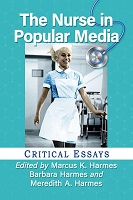Chapter In Search of Sympathy
Stereotypes and Stiff Upper Lips in Interwar Nursing
Author(s)
Chaney, Sarah
Collection
WellcomeLanguage
EnglishAbstract
In this essay, I place in historical context the three themes identified as important for the image of nursing in the Nursing Mirror competition, using nursing textbooks, diaries, memoirs, institutional and committee records and oral histories of nurses who trained in the 1920s and 1930s, largely from the Royal College of Nursing Archive. I begin with “human sympathy,” a trait newly emphasized in nursing around the turn of the twentieth century (Chaney, 2020). As I have shown elsewhere, there were definite class overtones to this new framing of nursing care. The emphasis on “finer” feelings such as sympathy was linked to explicit efforts by some reformers—such as Ethel Bedford Fenwick—to turn nursing into a middle-class profession (Rafferty, 1993; Brooks, 2001). The professional status of nursing in Britain was even newer, solidified by the passing of the Nurses Registration Act in December 1919. I turn next, then, to “professional capacity.” The view of professional identity that followed the introduction of registration was heavily shaped by First World War nursing. As well as the hierarchical structure of military discipline, the Edith Cavell myth popularized the view that not to show strong emotion was the hallmark of the modern, professional nurse. Finally, I examine the third theme outlined by the Nursing Mirror—beauty of line—in relation to the expectations around femininity and appearance in the interwar period. The good nurse was also a good woman, something visible in both her appearance and her actions.
Keywords
nurses; TextbookISBN
9781476684185, 9781476645469Publisher
McFarlandPublisher website
https://mcfarlandbooks.com/Publication date and place
2021Grantor
Classification
Nursing


 Download
Download